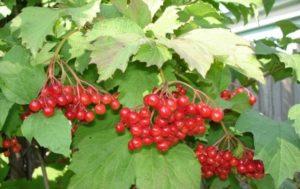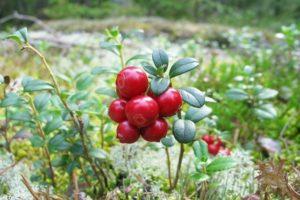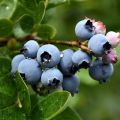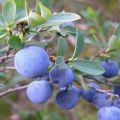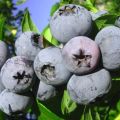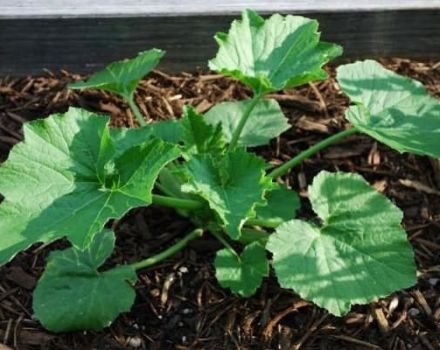Description and characteristics of the Toro blueberry variety, planting and care rules
Blueberries are a tasty and healthy berry. It is increasingly being planted in garden plots. Toro's blueberry is a tall plant that can grow up to 10 kilograms of berries per year. She makes great demands on the acidity of the soil, as well as on its care. Berries are used fresh, as well as canned and frozen.
Breeding history of the variety
Toro's blueberry was bred relatively recently, in 1987. Toro was obtained as part of a breeding program by American scientists. This is the result of crossing Erliblu and Ivanhoe varieties. High-quality blueberry bushes are grown both on individual garden plots and on an industrial scale.
All the pros and cons of culture
The advantages of Toro blueberries include the following qualities:
- she has tasty, healthy fruits;
- tolerates frosty winters well;
- the berries are large, so they are easy to pick;
- the plant gives a bountiful harvest every year;
- the crop can be stored for a long time;
- berries have a high presentation.
The disadvantages include the rapid completion of fruiting, as well as high demands on acidic soil. In addition, blueberry bushes, however, like other plantings, require constant care.
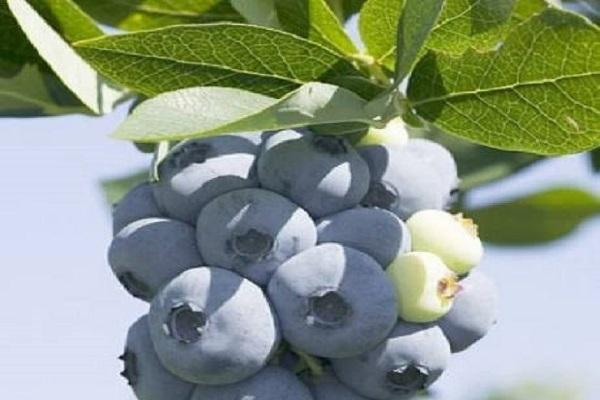
Description and characteristics of blueberry Toro
A mid-season blueberry variety is used not only as a fruiting shrub, but also as an ornamental planting.
Bush and root system
Toro is a tall blueberry variety. The bush can grow up to 2 meters in height. The upright plant grows in strength every year. Its leaves are large, heart-shaped. The root system of blueberries is shallow, so it is important to keep the soil moist.
Flowering, fruiting and yield
Toro blueberry blooms in May. Abundant fruiting begins from the 4th year after planting. The tender, sweet and sour fruits of blueberries ripen in early August. The berries are large, bluish-blue in color, their diameter reaches 2 centimeters. They are collected in large bunches and retain their quality throughout the entire harvest period. With good care, 7-10 kilograms of berries are harvested from one bush.
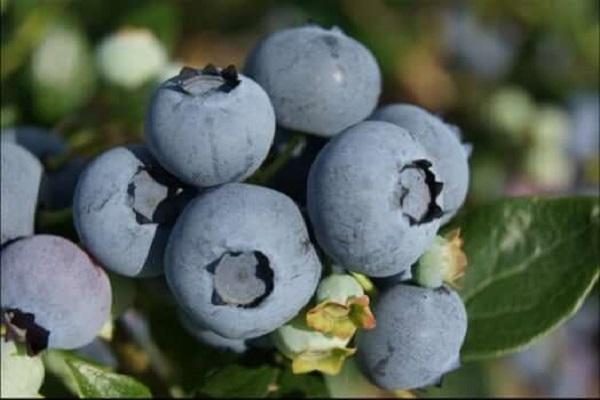
Additional Information. Blueberry juice is difficult to wash off hands, so vinegar is used to clean them.
Resistance to insects and diseases
Failure to comply with agrotechnical work, the variety is exposed to diseases.Most often, due to excessive soil moisture, the bushes are affected by various rot. The disease resistance of Toro blueberries is low, so proper care must be taken.
Also, the variety can be affected by harmful insects. Large pests can be collected by hand, small ones can be sprayed with insecticides. If the plant shows signs of disease, it will also need spraying, but already with fungicides. When using them, the preparations are guided by the age of the plants, and instructions for using the funds are also followed.
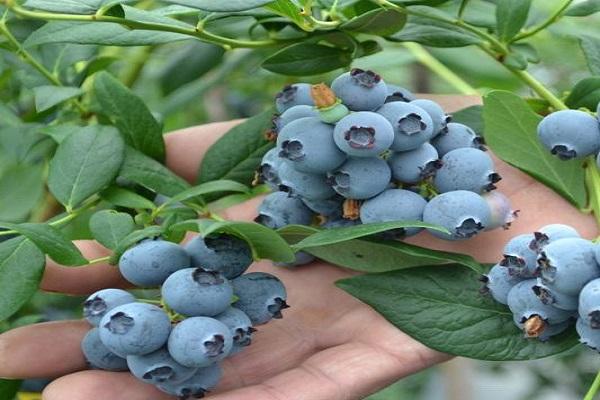
Resistant to low temperatures and drought
Toro blueberries can withstand frosts down to -30 ° C. It can be grown in both warm and cool regions. For the variety, both waterlogging and lack of water are destructive. Mulching with peat and bark of coniferous trees will help to retain moisture in the soil.
Planting and leaving
Young blueberry bushes are planted in open ground at the age of 1-2 years, with a height of 50 centimeters. In order for plants to bear fruit abundantly, they require constant care.
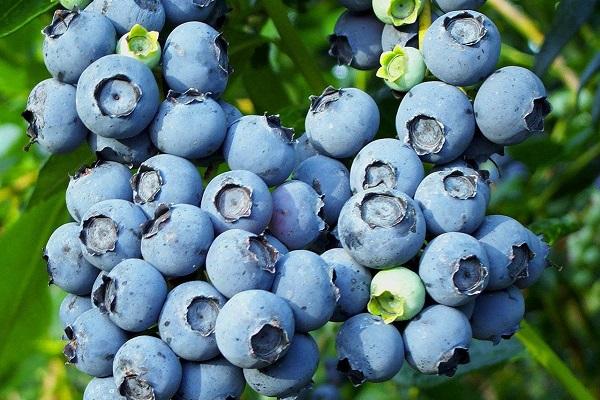
Dates and technology of disembarkation
Young bushes of Toro blueberries are planted in spring, before bud break, or in autumn, at the end of the growing season. Plants grown in pots can be planted throughout the season. Landing is done as follows:
- pits are dug 60 × 60 centimeters in size;
- drainage is laid out on the bottom;
- garden soil is mixed with peat, pours out into the pit;
- the roots are neatly straightened, covered with a substrate in such a way that the root collar is deepened no more than 5 centimeters;
- the bushes are watered and mulched.
If there is no peat, then a soil mixture consisting of garden soil can be used instead; land taken from under coniferous trees; as well as rotted pine or spruce needles. In addition, colloidal sulfur is used to deoxidize the soil in the garden, which is applied in the fall to a depth of 10-15 centimeters at the rate of 1 kg / m².
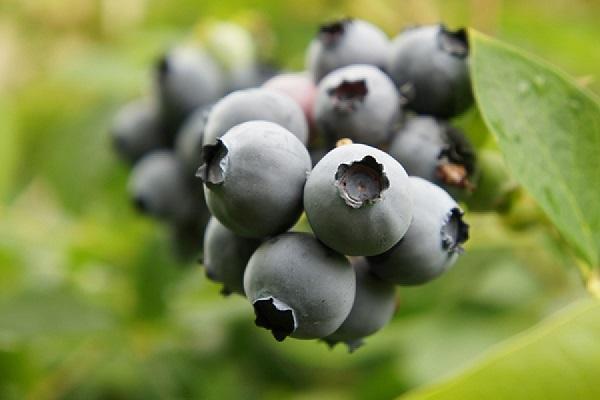
Important! Blueberries will thrive and bear fruit only on acidic soils.!
Irrigation frequency of the crop
Toro's blueberry is a moisture-loving crop, so you need to water it often. In the spring, the procedure is carried out, depending on weather conditions, 1-2 times a week. In the summer, watering is important for setting flower buds for the next season. In autumn, watering is significantly reduced.
Fertilization
The bushes are fed several times per season. The first time - before the start of sap flow with a complex fertilizer, consisting of nitrogen, phosphorus, potassium. The same composition is applied during the next feeding, which is carried out during the flowering of blueberries, and again during active fruiting. At the beginning of autumn, fertilizer is applied, which helps to strengthen the plant, to gain strength before frost.
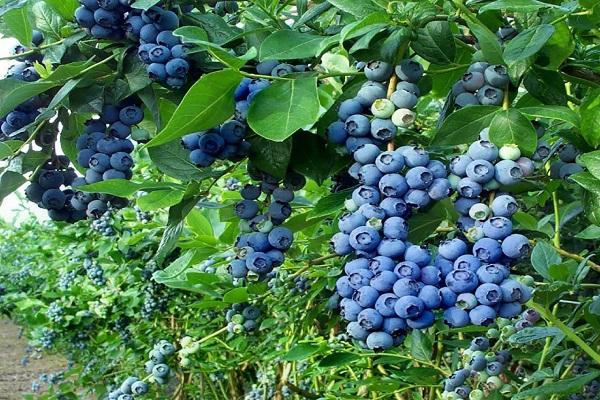
There is also a special blueberry food on sale with instructions for use. Many gardeners like to feed their plantings with bone or dolomite flour, wood ash. For blueberries, these components will be detrimental, since they alkalize the soil, and the culture needs acidic soil.
Garden bed care
Care consists in timely watering, feeding, soil mulching, pruning. Adding to the roots of peat, coniferous litter, sawdust helps to preserve moisture in the ground, prevent the growth of weeds, and also, during rotting, will serve as a fertilizer for plants.
In order for the bushes to actively grow and bear fruit, starting from the second year of life, they begin to feed.
From the same year, they carry out sanitary pruning, removing broken, diseased, frozen branches. Young shoots are removed, which takes away strength from the plant, and also contributes to the formation of fungal diseases due to poor drying of morning dew on them.In early spring and late summer, to increase the acidity of the soil, it can be spilled with a 9% solution of vinegar (70 milliliters per bucket of water).
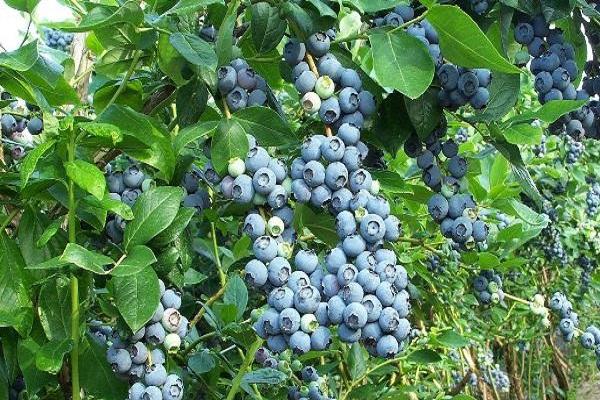
Anti-aging and shaping pruning
To rejuvenate the plant, all branches older than 5 years are pruned. This procedure helps to maintain fruiting. Formative pruning is needed to thin out the crown from unnecessary branches that thicken the bush. It should be borne in mind that the highest yield is given by the shoots of the second year of life. Shoots that do not give flower buds (blind) are removed.
Note! Pruning improves the illumination of the bush, which promotes the formation of large berries.
Preventive treatments
As a result of improper care, blueberries can be affected by fungal diseases. Most often this occurs from waterlogging of the soil by an inexperienced gardener, as well as as a result of excessive precipitation. To prevent diseases, blueberries are sprayed with various preparations, for example, Agricola or Iskra, according to the instructions.

In addition, the bushes can be sprayed with copper-containing preparations, such as Bordeaux mixture, HOM, and copper sulfate. To prepare 3% Bordeaux liquid at home, you must take the following components:
- 300 grams of copper sulfate;
- 300 grams of lime.
Cooking process:
- dissolve lime in 3 liters of hot water, then add 2 liters of cold water;
- Mix copper sulfate with 1-2 liters of hot water, after it cools down, bring the volume of liquid to 5 liters.
Each of the components is diluted separately, then the following sequence is observed: a solution of copper sulfate is added to strained milk of lime. The mixture quickly loses its properties, so you need to use it on the same day.
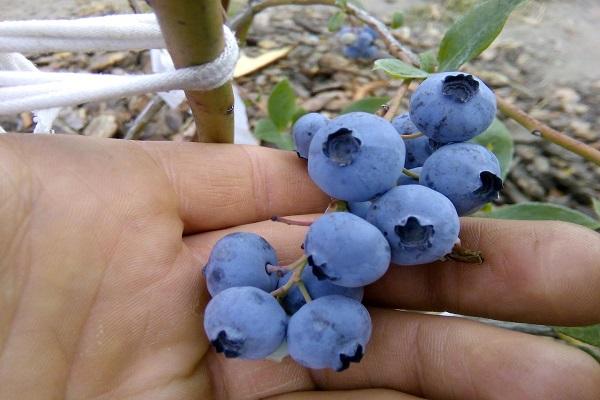
Shelter bushes for the winter
Before the onset of frost, young Toro blueberry bushes are bent to the ground, secured with ropes tied to metal arcs. From above, the structure is covered with a canvas fabric, spunbond, then spruce branches. The device must be reliable, otherwise the bushes may remain unprotected from the weather. You can not cover the plants ahead of time: in the warmth, shoots can begin to grow, which will subsequently die from frost.
Variety reviews
According to gardeners' reviews, Toro blueberries have tasty, aromatic berries with a good presentation. They can be consumed both fresh and canned. The variety requires constant care, including watering, feeding, pruning. If Toro blueberries are grown in insufficiently acidified soil, they will not produce a good harvest. With good care, the variety will delight you with tasty and healthy fruits for many years.
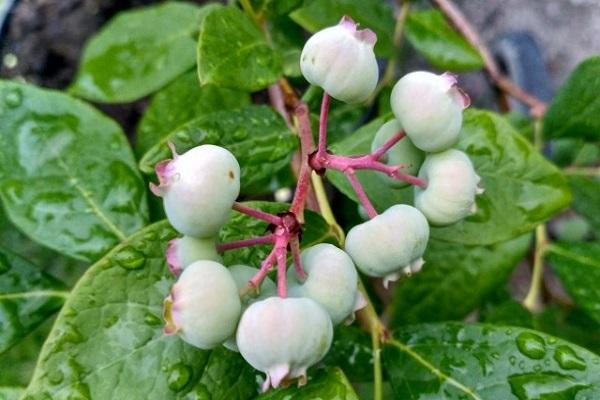
Last year, two varieties were harvested: Reka and Toro. The river was showered with fruits, but they were of unexpressed taste, insipid. Toro had only 6 ripe berries, but they were very sweet, with a pleasant aroma.
Andrey Kiev region
I planted some Toro blueberry bushes in my area. On the advice of neighbors, I acidified the soil with spruce litter, but there was no result: the bushes sat in place, did not develop. When she began to water with acidified water, Toro finally bloomed, and grew the first delicious berries!
Elena Krasnodar region
